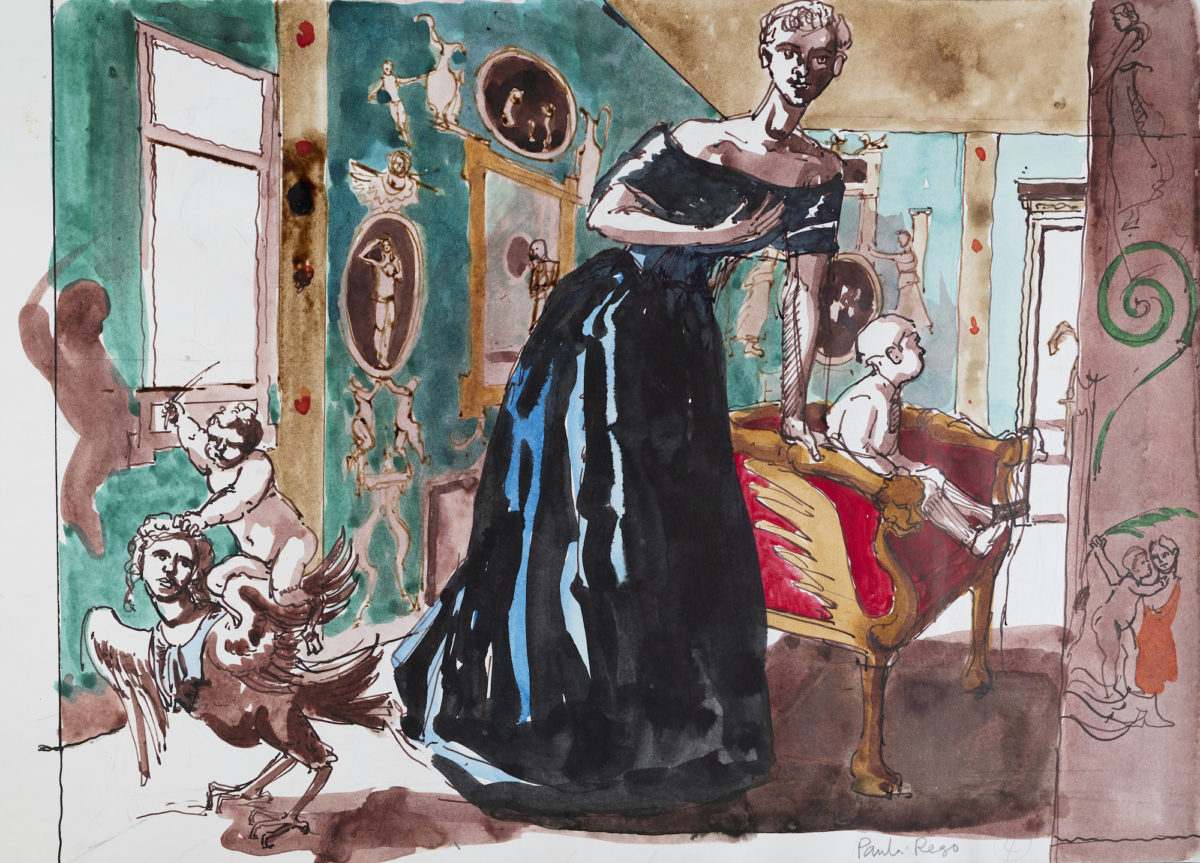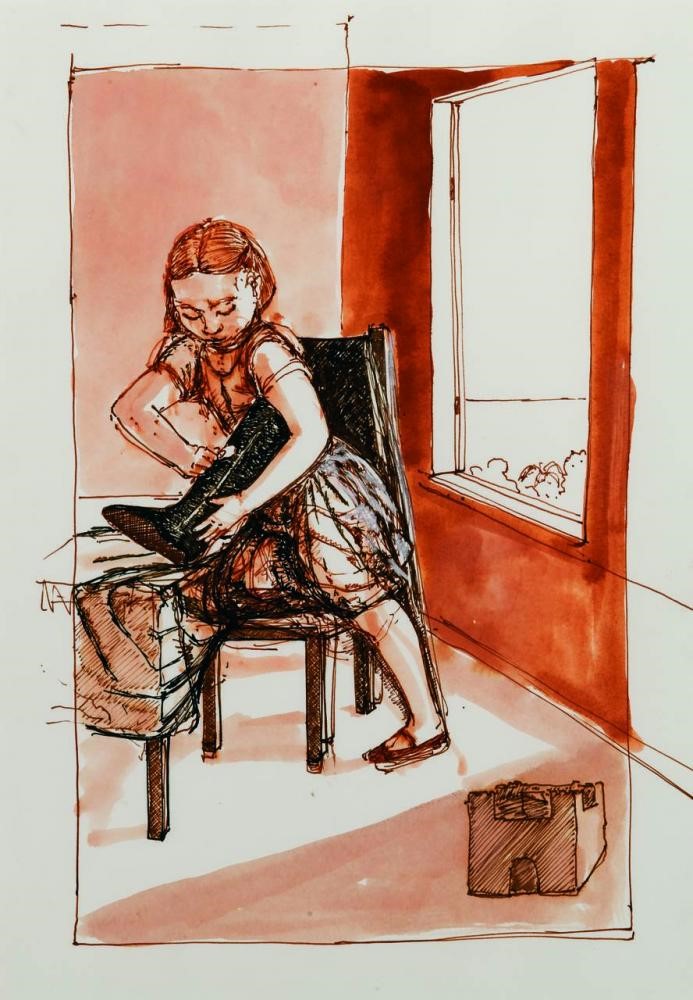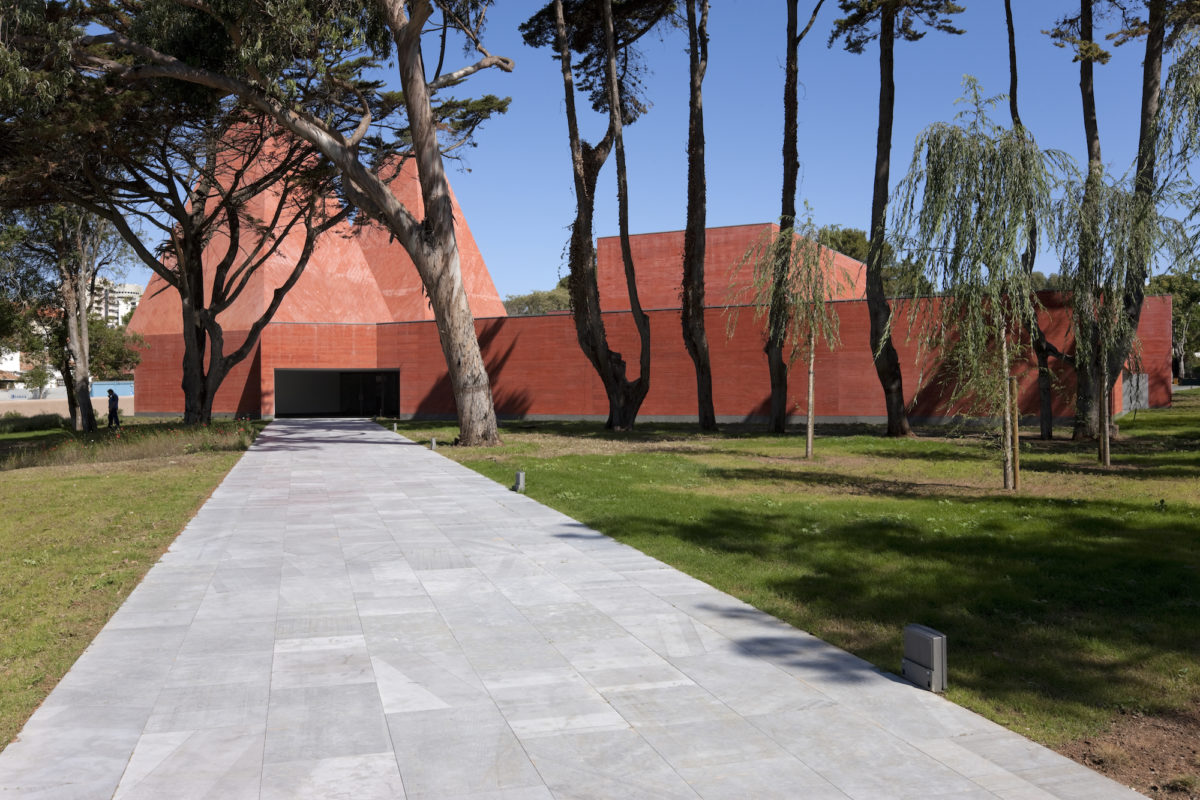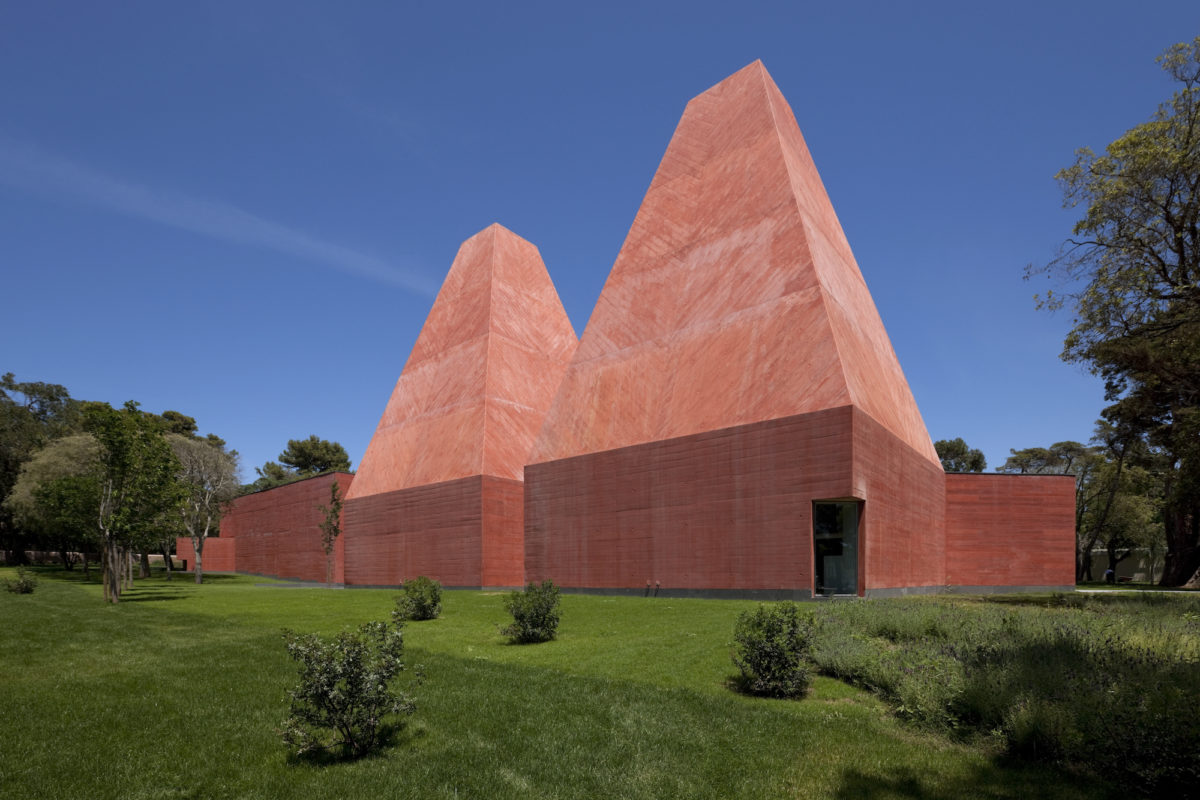
What
A pair of immense terracotta-coloured pyramids rise up amidst the foliage in the seaside dwelling of Cascais—hardly the most expected sight to encounter in an otherwise typically quaint Portuguese town. This unusual modernist structure houses a treasure-trove of drawings, etchings, paintings and designs (some 700 in total) by Paula Rego, one of Portugal’s most famous artists.
The artist worked in close collaboration with the building’s architect, the Pritzker Prize-winning Eduardo Souto de Moura, when devising the project. The aim of the museum, first opened ten years ago, is to invite audiences to experience Rego’s whimsical, often darkly imaginative work within a firmly contemporary setting. Fittingly, it is named the Casa das Histórias (the House of Stories), and weaves an intricate web across more than 50 years of Rego’s prolific career.
Who
Paula Rego studied at the Slade School of Fine Art from 1952, and was the first artist-in-residence at the National Gallery in London in 1989. Although she has spent much of her creative life in London, where she continues to live and work, her work remains distinctively Portuguese. She often drew upon folk tales, mythology and storybooks from her native country, and was not afraid to tackle social issues such as gender discrimination, violence and political tyranny in her work.
“I always want to turn things on their heads, to upset the established order”, she said in 2019. She enacts her own storytelling process through loose drawings and sketchbooks, many of which can be viewed at the museum, with two temporary exhibitions staged each year alongside the permanent collection.
- © Luís Ferreira Alves
Where
The architecture of the museum was designed in direct response to the greenery of its original site, at the town’s former sporting club. Architect Souto de Moura conceived of the dual pyramids as a portrayal of the negative space around the many trees, playing with the notion of yin and yang, and hinting at the tension between artefact and nature.
The distinctive pink colour of the building was achieved through tinted concrete, with a pigment that runs all the way through the material. The surrounding trees casts shadows across the facade, while each exhibition room has a direct opening to the gardens outside. Locally-sourced marble is used on the interior, and the building also houses a shop, sun-filled cafe and 200-seat auditorium.
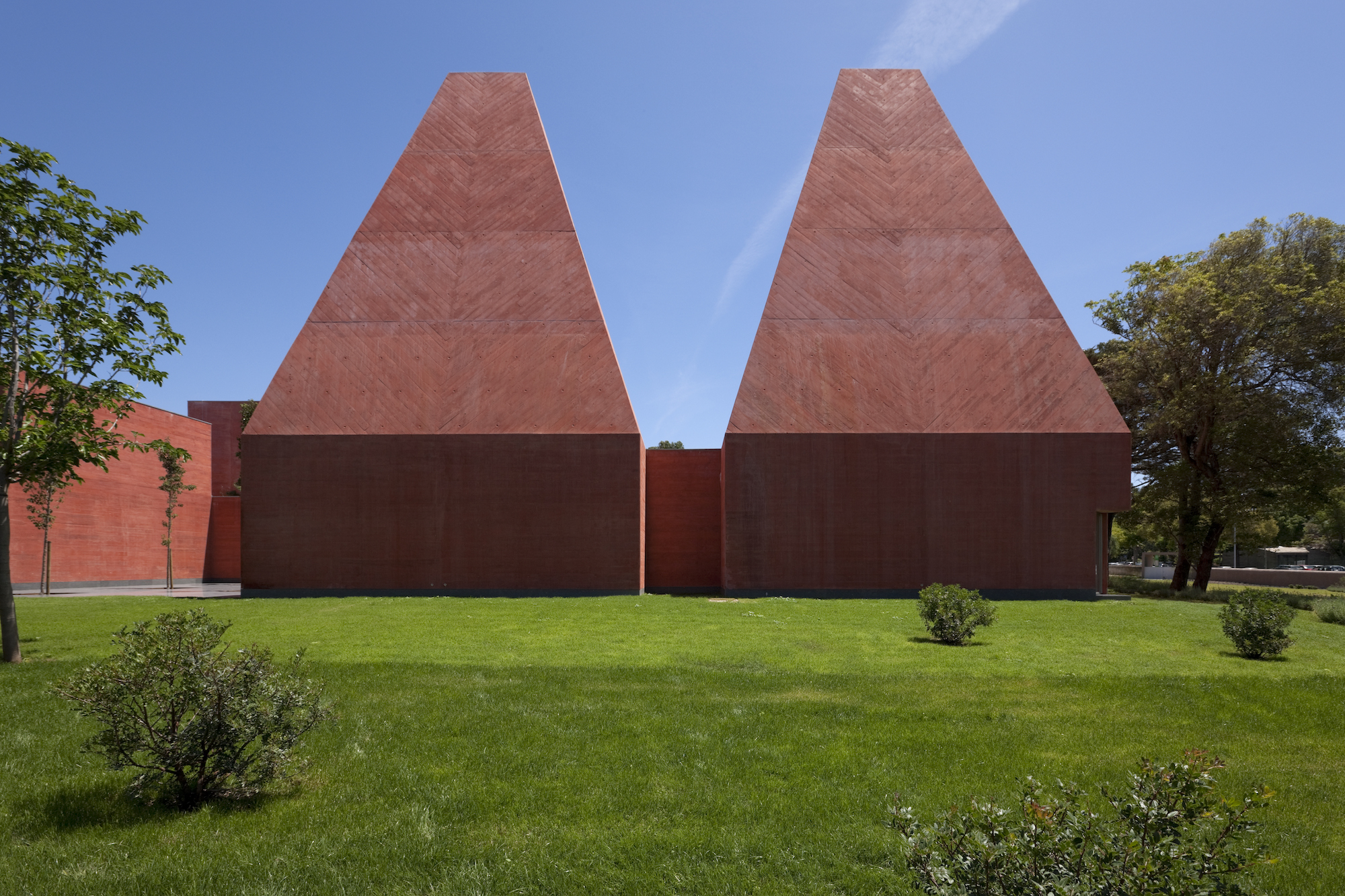
Why
Hidden away by the sea, this is where art and architecture meet in truly collaborative fashion, with two of Portugal’s most creative minds working in harmony. Rego and Souto de Moura have built a paean to the simple power of storytelling. The museum remains curiously under-the-radar, so a typical visit is likely to give the space and time to fully take in the works on display, far away from the usual crowds.
Take the train from Cais de Sodre in Lisbon on the Cascais line and enjoy beautiful views as the train snakes directly alongside the coast. While in Cascais itself, make a day of it and walk up to the Boca do Inferno (which translates literally as Hell’s Mouth), where the waves crash against a cliff formation with all the rage of the devil himself; it is a breathtaking spectacle to behold. Just as the Casa das Histórias Paula Rego unites art with nature, so does nature in Cascais become an art in itself, where the two endlessly entwine.
Louise Benson is Elephant’s deputy editor
All images courtesy Casa das Histórias Paula Rego
